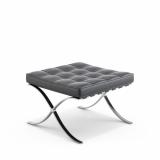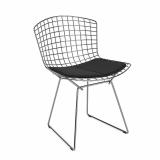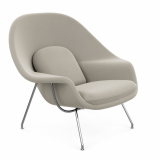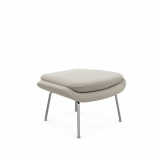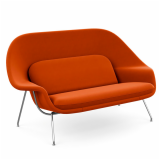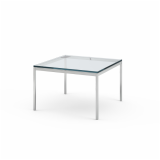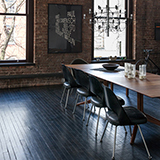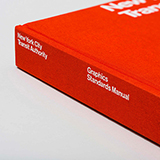Eric Keune, design director of Skidmore, Owings & Merrill, purchased this Gold Coast penthouse for his wife and son. Upon learning that the original architect, John Macsai, was still alive and living in Evanston, Keune decided to pay him a visit. “I took him out to lunch and talked with him about the building and the design before running some ideas by him.” While not strictly in favor of Keune’s plans for renovation, Macsai proved an amiable listener. A Hungarian-born, Chicago-based architect, Macsai is responsible for many of the city’s residential high-rises, including the building immediately adjacent to Keune’s. Keune offered up as his impression of Macsai: “He’s a funny, curmudgeonly character.”
Keune recognized that the building had great underlying organizing principles: no columns and exposure on three sides to the environment. The location, too, was of note, situated right next to Lake Michigan with an unadulterated view of the water. Given the good bones, Keune says, “The goal of the project was to take an existing apartment designed in 1971 […] and bring it up to date, using a grammar more conversant with orthodox modernism.” Keune strategically removed walls to allow one to see from one end of the flat to the other, and introduced sliding doors and pocketed spaces to an accommodate a variety of needs. “The house has the ability to wear many masks,” Keune says of the final adaptable design.
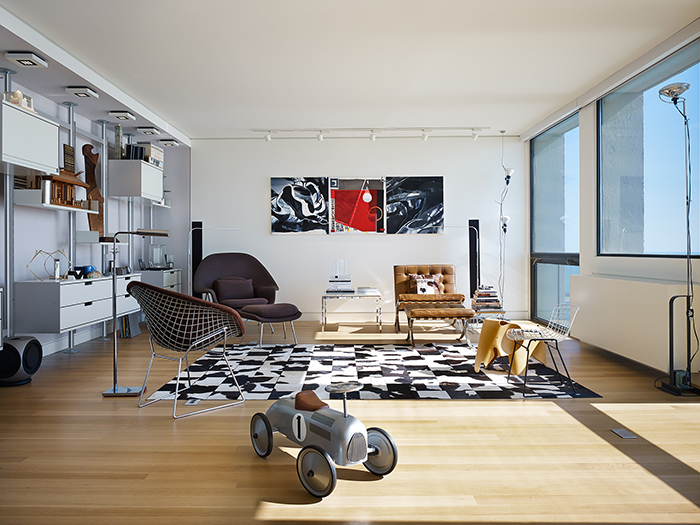
Eric Keune's renovated 1970s penthouse in Chicago, Illinois. Photograph by Steve Hall, courtesy of Hedrich Blessing.
“My father always had a Womb Chair growing up. It lived in the corner position of prominence in the living room, so it made sense for me to put [mine] there.”
—Eric Keune
Keune’s self-professed love of modernism is largely informed by his father, also an architect, who recently passed away. “He was an extreme Knoll zealot and collector, maybe [Knoll's] biggest fan,” says Keune. “He spent much of his life collecting Knoll pieces and gave them to me as presents over the years.” Those pieces remain today and their placement within the renovated loft is based, in part, on Keune’s childhood memories. “My father always had a Womb Chair growing up—I recently found a photograph of myself as a baby in one. It lived in the corner position of prominence in the living room, so it made sense for me to put [mine] there.” The Barcelona Chair and Stool, too, were heirloom gifts from Keune's father. When, with time, the upholstery began to show signs of wear, Keune’s father found a former Knoll employee to reupholster the pieces according to the company’s standards. “His name is Dave Erbe. He lives in Pennsylvania near the Knoll factory [in East Greenville] and he reupholstered the pieces in his garage.”
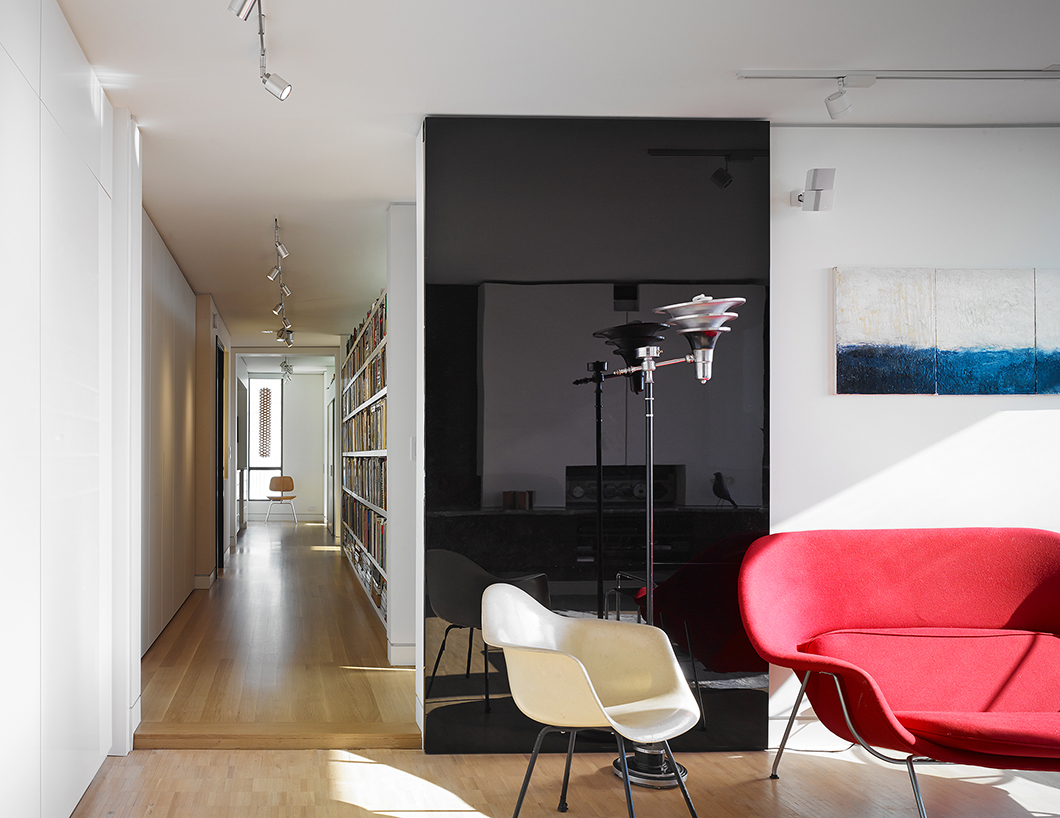
Eric Keune's renovated 1970s penthouse in Chicago, Illinois. Photograph by Steve Hall, courtesy of Hedrich Blessing.
Since then, Keune has added to the collection of furnishings that his father begun. Among the more recent acquisitions is an original 1948 Womb Settee that Keune worked for ten years to track down. “I ended up buying it from someone in Michigan,” Keune recalled. Other planning decisions were predicated on Keune’s architectural experience, “I decided to keep things that were more opaque against the wall and oriented toward the view. The delicate, gridded back of the Bertoia Diamond Chair, for instance, set off against bright upholstery, makes for a very interesting visual pattern in the space.”
The most striking detail, however, is also one of the most ephemeral. As Keunce explains, “My dad collected these little miniature buildings from around the world: Chinese skyscrapers, post-war German television towers and Japanese temple pagodas from Shinto shrines. Now, they line the top of the bookshelf, and twice a year, during the summer and winter equinox, for about 15 minutes the sun casts a shadow of an imaginary city. It’s incredible.”
Project Credits
Architecture: John Macsai
Design: Eric Keune
Photography: Steve Hall



















